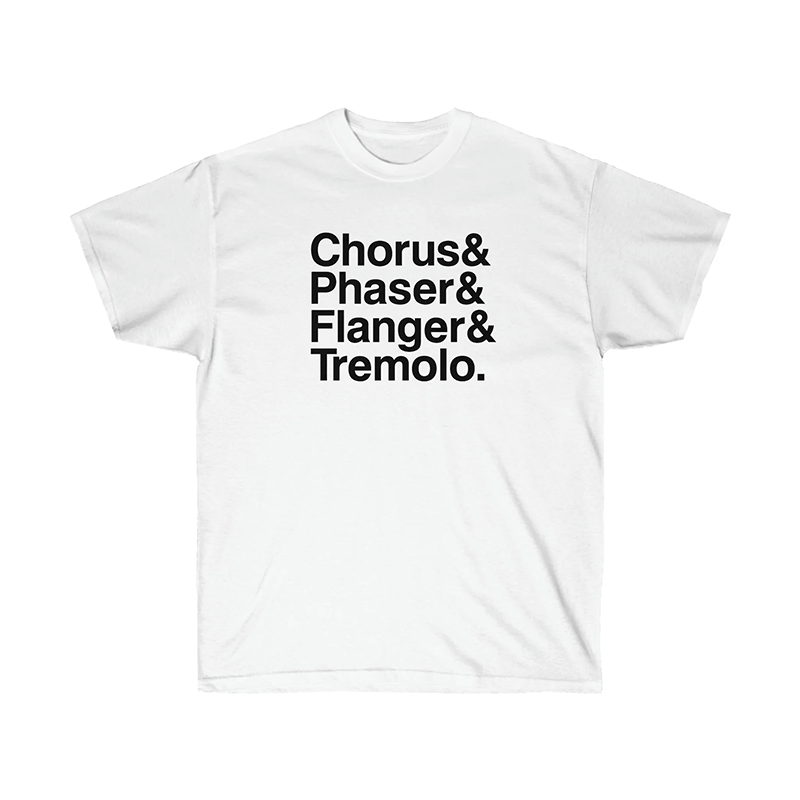THE RAT. Few distortion pedals have as much instant recognizability, despite (usually) just bearing the colors Black & White. There are many iterations of this classic effect, but how could you possibly collect them all without breaking the bank? Well, as usual, JHS Pedals comes to the rescue, in the form of the PackRat Distortion. Taking different RAT circuits from the last 4 decades, from different manufacturers, this pedal gives you the best of all things RAT in one affordable place – Let’s Get Dirty!!
If you know Josh and JHS, they don’t f*ck around when it comes to pedals, and the PackRat is no exception. Tracking down over 100 different versions of this sound, they’ve put together the ultimate RAT collective, smashed all the “facts” everyone thought they knew and created a comprehensive, cohesive and glorious distortion pedal that showcases the best of the best RATs out there. The Volume and Distortion knobs do what they will in each mode, as does the Filter…BUT, as some of you know, this parameter was sometimes backwards in different RAT circuits, so each of the following modes will throw you a surprise…here’s what we’re working with:
From JHS:
“The PackRat Modes:
1. The OG V1 (1979-83)
The OG mode is a perfect recreation of the first production RATs ever made. This era of roughly four years covers what is referred to historically as the V1 models.
Early V1s are also known as the Fringe Logo model and can be identified by the letters R-A-T being in all capital letters with a slight fringe graphic coming from the typeface. The V1 also has small silver capped knobs and a Tone knob instead of the more familiar and later produced V2 Filter control labeling. From a circuitry standpoint, the V1 and V2 Big Box models are practically identical except that the V1’s Tone control increases treble as you turn clockwise while the V2’s Filter control decreases treble in that direction. When switching to the OG mode, you are activating the exact circuitry of my 1979 V1 Fringe Logo model, including the accurate Tone control rotation and taper.
Let me take a moment here to clarify: the V1 and V2 models are the exact same circuit, and simple adjustments to the Tone/Filter control can achieve identical sounds from each unit.
2. White Face V3 (1984-1986)
In 1984, the RAT transitioned into a smaller square enclosure with a new white rectangle logo. The word RAT was in all black caps inside the white rectangle; this model gained the “White Face” RAT nickname due to this aesthetic. In 1986, this same model had a logo change that simply inverted the white and black colors, resulting in the more familiar white rectangle outline and font on the black enclosure.
3. Turbo V5 (1989)
The heart of the RAT’s tone comes from a design technique called symmetrical hard clipping. In this approach, a simple amplifier circuit amplifies the guitar’s signal and pushes it across a pair of clipping diodes. The result is that these diodes clip off the top of the waveform of the guitar and create a type of square wave distortion. Every RAT until 1989 utilized a typical silicon diode, just like the DOD 250 and BOSS DS-1, but the new Turbo RAT used LEDs (Light Emitting Diodes). Yup, these are the same LEDs you see in flashlights, your car’s dashboard, DVD players and almost every other electronic device on earth. This technique was a first in pedals (the same clipping style was used in the Marshall Guv’nor) and offered a completely new RAT experience.
The silicon diodes in previous versions have a lower forward voltage, resulting in a faster and more extreme clipping of the waveform. You could say this type of diode creates a very saturated tone. The Turbo’s LEDs have a much higher forward voltage, so they don’t activate or clip the signal as fast or as hard. It takes more signal to reach the point where they will “cut off” the waveform, which causes the phenomenon we know as touch sensitivity. You can set the Distortion lower, and as you play lightly, you will have an overdrive tone; dig into your guitar and play hard, and hear more clipping/distortion.
4. BRAT V6 (1997)
In 1997 ProCo got into the budget pedal game by releasing the BRAT and the Guitar Center exclusive, Roadkill. These two identical circuits with different and very nineties grunge aesthetics have the most changes so far in the evolution of this legendary circuit. This design added an input buffer circuit and soft clipping (inside the loop of the op amp) on top of the standard hard clipping of the previous RATs. We also see a return to the opposite taper/rotation Filter control and several capacitor value changes that alter the frequency response and characteristics of the distortion.
5. Dirty V7 (2004)
In 2002, ProCo released a 2-in-1 RAT pedal called the Deucetone. This pedal allowed you to have two completely separate RATs and activate them independently or stack them together. It also introduced two brand new sounds into the RAT topology: “Clean RAT” mode and “Dirty RAT.” Due to the popularity of the “Dirty RAT” mode, they released a single pedal called You Dirty RAT that featured that single setting in a standard sloped RAT enclosure. This circuit utilizes germanium diodes in the symmetrical hard clipping section of the circuit. This technique gives the most saturation and waveform clip-off of any version ever made. In addition to the diode changes, this model has several different capacitor value changes resulting in a different distortion character and feel.
6. LA (1986)
In 1986, Ibanez released the 10 Series line of pedals that included three RAT style pedals. The Super Product and Fat Cat held the position of accurate and traditional RAT style pedals, while the quirkier LA Metal was, in my opinion, one of the best-modified RAT circuits of the eighties. It includes a great input buffer, several key capacitor changes for frequency response, and no clipping diodes at all. The distortion is produced by overloading or “clipping the rails” of the op amp.
7. Landgraff MO’D (1999)
Between 1999-2000, a man named John Landgraff started building pedals by hand in Pensacola, FL. Each one painted with a unique swirl paint job and wired point to point; John’s pedals were and still are the true definition of boutique and gained a reputation for sounding amazing. His most popular pedal was the Landgraff Dynamic Overdrive, a take on the Ibanez Tube Screamer, but my favorite was his distortion pedal that he called the “MO’D,” a distant cousin of the RAT and a really fantastic pedal in its own right.
8. Caroline (2010)
A few years after starting JHS, I purchased a fascinating distortion pedal from a brand new company out of South Carolina. I remember jumping on the phone and geeking out with the designer and head of the company Philippe Herndon. We talked about the circuit, his love for RATs and his clever take on the circuit. That pedal was called the Wave Cannon and when I started the PackRat project, it was obvious that Philippe was the friend I should bring along for the ride.
9. JHS Mode
In 2003 I managed a tiny guitar shop in Northwest Alabama. One day a man walked in with a vintage Small Box RAT and said he wanted to sell it. When the shop’s owner said he wasn’t interested, I said I was. I bought that RAT for $15, and this is most likely the single event that led me down the pedal collecting rabbit hole. That pedal stayed on my board for a decade, and when I started modifying and building pedals in 2007, I opened it up, learned the circuit and modded it to reflect a different kind of sound. Parts of that modification became the now discontinued JHS All American and the long-running JHS PackRat modification that we performed on thousands of RAT pedals from 2008-2018. The JHS Mode lets me keep what makes the RAT unique and add in a few of my personal favorite mods.”
Whew! Well, you can’t really get the full feel and prowess of this collection of circuits until you hear ’em, but luckily, we’ve got a sweet demo video waiting for you below. And if all this info just isn’t enough for you, Josh has put together the most superb and extensive deep dive into the RAT the world has ever seen, and you can peruse it RIGHT HERE. Just an amazing all-around feat, not to mention one of the funnest and best-sounding distortions we’ve come across, the PackRat Distortion will open you mind…but beware, you might just fall down a distorted rabbit hole from which you may never return…cheers!
Affiliate Links:
Sweetwater – https://sweetwater.sjv.io/MX05KP
StewMac – https://stewmac.sjv.io/P0X7BQ
Perfect Circuit – https://bit.ly/3pHpS6P
Amazon – https://amzn.to/3FN04Mq
GET EXCLUSIVE UPDATES, CONTEST INFO, SEE OUR LATEST DEMO VIDEOS AND MORE:

















